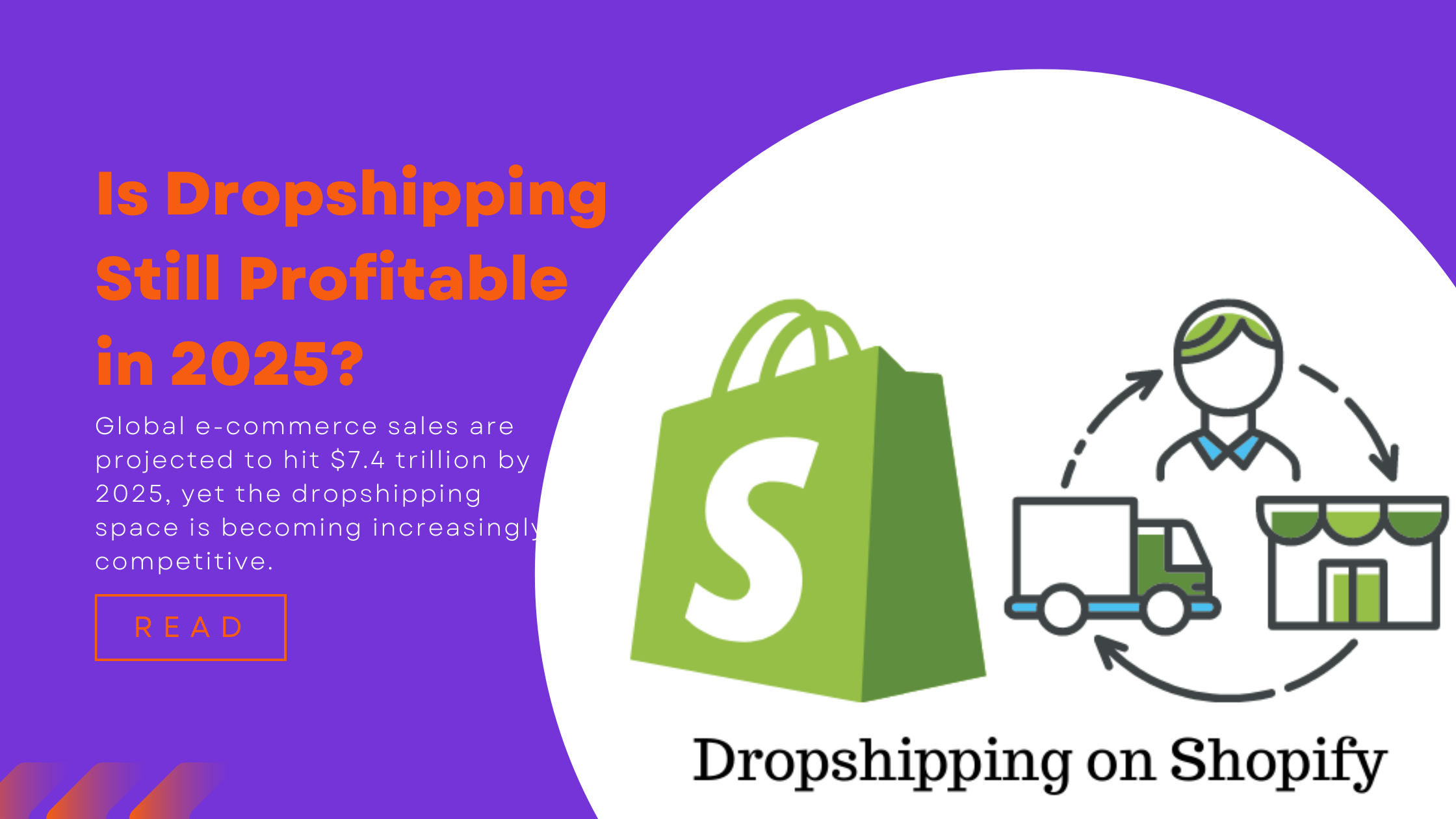Dropshipping once reigned as the go-to business model for aspiring entrepreneurs. It promised low upfront costs, minimal risk, and the allure of running a business from anywhere. But as we approach 2025, things have shifted. Here’s the kicker: global e-commerce sales are projected to hit $7.4 trillion by 2025, yet the dropshipping space is becoming increasingly competitive.
So, the big question looms—is dropshipping still profitable in 2025, or has the ship sailed? Let’s be honest: making dropshipping work today is no walk in the park. Rising ad costs, stricter platform rules, and evolving consumer demands are forcing sellers to up their game. But don’t throw in the towel just yet. With the right strategies, you can still turn dropshipping into a lucrative venture.
In this article, we’ll break down the current state of dropshipping, highlight emerging trends, and provide actionable steps to stay ahead in 2025. Let’s get into it!
The Current State of Dropshipping in 2025
- Higher Competition but Bigger Market: Dropshipping has exploded in popularity, leading to a saturated market in some niches. However, global e-commerce growth means there’s still room for newcomers if they target underserved markets.
Action Tip: Focus on niche products with low competition and high demand. Tools like Google Trends and niche research platforms can help you identify these gaps.
- Stricter Advertising and Platform Rules: Platforms like Facebook and Google have become stricter about ad quality and compliance. Poorly run ads can lead to account bans.
Action Tip: Invest in creating high-quality ad creatives and follow platform guidelines meticulously. Diversify your marketing by incorporating TikTok Ads or influencer partnerships.
- Rising Customer Expectations: Modern consumers expect fast shipping, quality products, and excellent customer service—even from dropshippers. Failing to deliver these can result in refunds and negative reviews.
Action Tip: Partner with suppliers offering reliable shipping times and quality control. Consider working with suppliers closer to your target market (e.g., U.S. or EU-based suppliers).
- Cost of Ads Is Up, But So Are Opportunities: Ad costs have risen significantly, eating into profit margins. However, new platforms like TikTok and organic strategies like SEO offer cost-effective alternatives.
Action Tip: Build organic traffic through content marketing. For example, create product review blogs or how-to guides to attract an audience and reduce reliance on paid ads.
- AI Tools Are Changing the Game: Artificial intelligence tools for product research, content creation, and customer service are making dropshipping more efficient.
Action Tip: Leverage AI tools like ChatGPT for creating product descriptions and Jasper for ad copy. Use automation to streamline customer support and order tracking.
Emerging Trends in Dropshipping for 2025
- Eco-Friendly Products: Consumers are increasingly prioritizing sustainability. Selling eco-friendly or ethically sourced products can set your business apart. Example: Bamboo cutlery sets, reusable bags, and solar-powered gadgets.
- Localized Dropshipping: Targeting local markets with region-specific products reduces shipping times and improves customer satisfaction. Example: Selling winter gear in Canada or summer beachwear in Australia during peak seasons.
- Subscription-Based Models: Offering recurring subscription options (e.g., monthly skincare kits or pet supplies) ensures steady revenue streams.
How to Stay Profitable in Dropshipping in 2025
- Double Down on Branding: Generic products don’t cut it anymore. Focus on creating a strong brand that resonates with your target audience. Use custom packaging and branded content.
- Build a Loyal Customer Base: Instead of chasing new customers, invest in retaining your existing ones. Loyalty programs, discounts, and exceptional support can keep customers coming back.
- Explore Alternative Fulfillment Models: Hybrid models like dropshipping with warehousing (storing high-demand items locally) can reduce shipping delays.
- Embrace Automation: Use automation tools to streamline everything from product imports to email marketing campaigns. This saves time and reduces operational costs.
Dropshipping in 2025 is far from dead—it’s evolving. While it’s no longer as simple as throwing up a website and waiting for sales, those willing to adapt can still thrive. By focusing on niche products, building a strong brand, and leveraging modern tools, you can turn dropshipping into a profitable venture.
Remember, success in dropshipping (or any business) is about adapting to change. The game might be tougher, but the rewards are still very real for those who play it smart.

